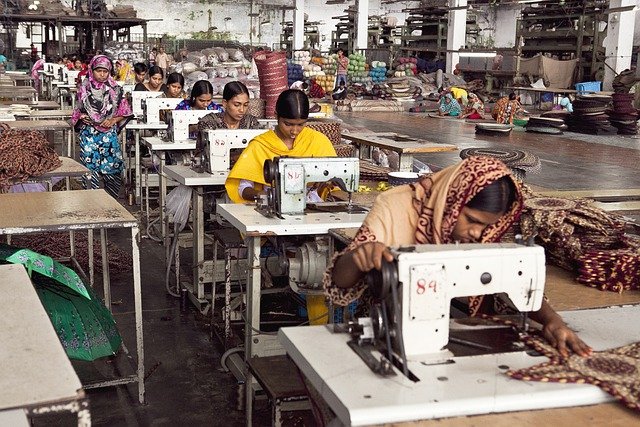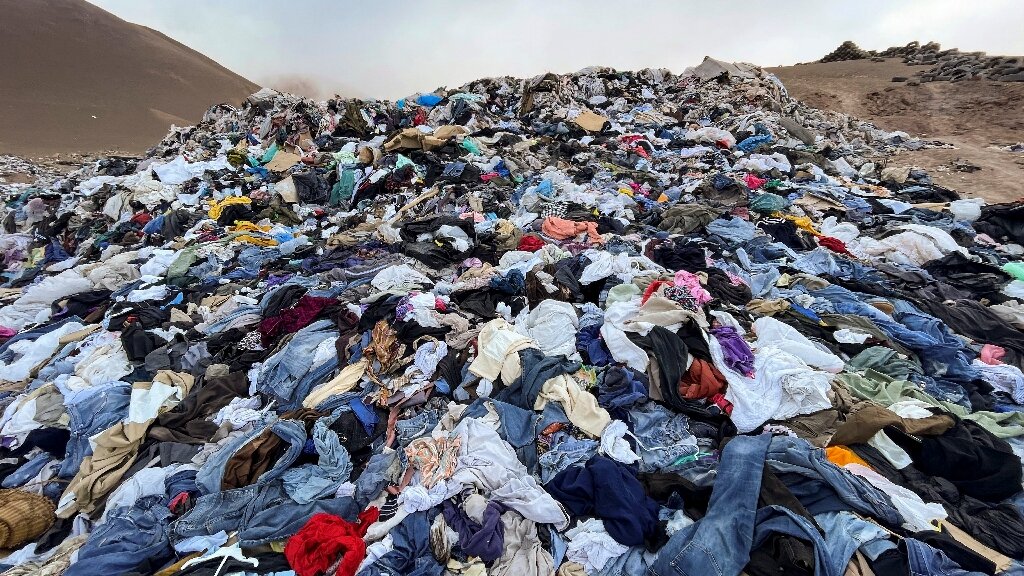 While hanging out with your family and friends in the mall, you walk past a bustling store filled with customers, some already holding several hangers in their hands, others leisurely browsing a colorful array of clothes.
While hanging out with your family and friends in the mall, you walk past a bustling store filled with customers, some already holding several hangers in their hands, others leisurely browsing a colorful array of clothes.
You wonder to yourself, where are all these clothes coming from, and how are they being produced so quickly?
The answer to both those questions is fast fashion, a phenomenon that has been taking over the fashion industry. Unfortunately, the cost of this practice is high: a few issues include damage to the environment, exploitation of workers’ rights, and production of lower-quality clothes.
What Is Fast Fashion?
Fast fashion refers to the rapid manufacture of garments to keep up with what’s “cute and trendy” and to market them at a low cost. The quality of the clothing suffers, which, believe it or not, is the goal of fast fashion!
By mass-producing cheap garments, large retail stores earn high profits from a never-ending cycle of individuals purchasing new items to replace garments worn out after just a few wears. Other times, because of how cheap the clothing is, many end up in heaps in the landfill. According to the Columbia Climate School, “less than 1 percent of clothing is recycled to make new clothes.”
 What’s worse, garment factory workers are often forced to work under sweatshop conditions, facing dangerous and unsanitary conditions and a salary unable to sustain the basic necessities of life. In many of these factories, labor laws are only loosely enforced, and there are no regulations regarding minimum wage.
What’s worse, garment factory workers are often forced to work under sweatshop conditions, facing dangerous and unsanitary conditions and a salary unable to sustain the basic necessities of life. In many of these factories, labor laws are only loosely enforced, and there are no regulations regarding minimum wage.
Impact On The Environment
Fast fashion is the fourth greatest contributor to climate change, preceded only by food, housing, and transport, as reported by the European Environment Agency. It causes 10% of anthropogenic greenhouse gas emissions and nearly 20% of water pollution annually.
When companies color their fabrics using toxic chemicals, the untreated water contaminates canals and endangers aquatic life. Overall, clothing production uses 93 billion cubic meters of water every year, enough to meet the daily living needs of 5 million people!
Fabrics frequently used in the industry are also heavily reliant on natural resources. Did you know that a whopping 70 million tons of trees are cut down annually to create wood pulp for the production of materials like rayon and viscose! Researchers predict this would double by 2034 and lead to even more deforestation if action against fast fashion is not taken quickly.
What Actions Can We Take?
 The European Union is taking action by holding manufacturers accountable for more durable and eco-friendly clothing.
The European Union is taking action by holding manufacturers accountable for more durable and eco-friendly clothing.
To encourage greater sustainability, some companies are opting for less resource-reliant materials such as bamboo in place of cotton and other fabrics that gobble up millions of tons of water every year. One company has even developed an alternative technique for dyeing fabric, which uses waste CO2 instead of water. Designers are using 3D virtual sampling of materials to eliminate some parts of the process of trial and error in sewing the clothing.
As potential consumers, our efforts are just as essential; knowing the negative consequences of fast fashion, we are called to consider every purchase more carefully. Perhaps a favorite pair of jeans or a t-shirt can be revived through some quick mending. Investing in a secondhand store also creates a lower impact wardrobe.
Ultimately, as consumers and citizens of society, we must realize that fast fashion is an issue inextricably tied to the well-being of every individual and the future of the planet. When we become aware that every dollar spent on a certain store is a vote in support of their practice, we have the power to stop fast fashion in its tracks.
Sources: Guardian, BBC, Princeton Univ, Columbia Univ







